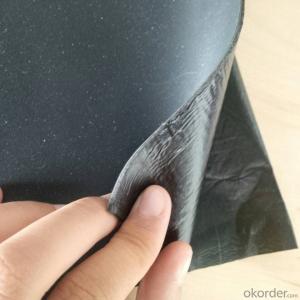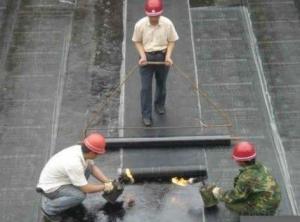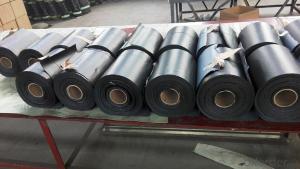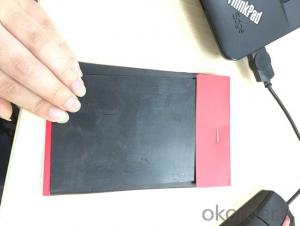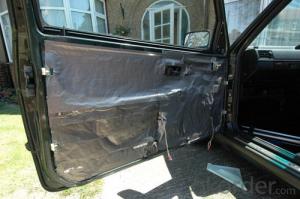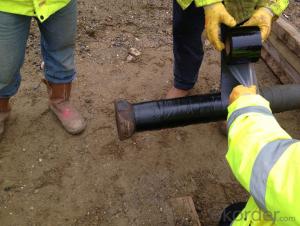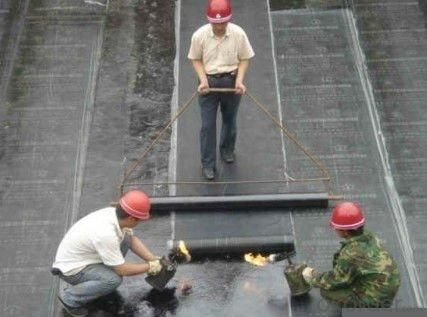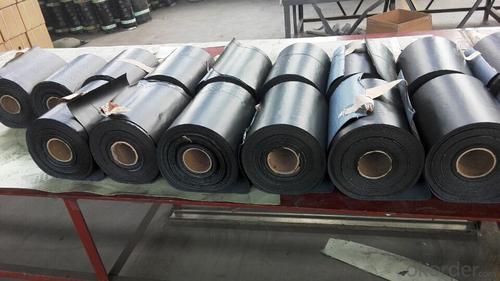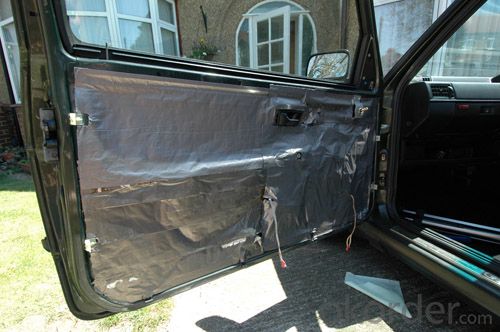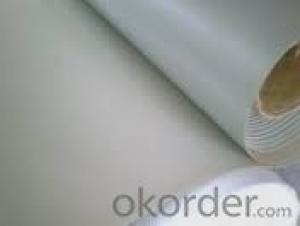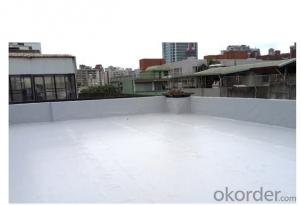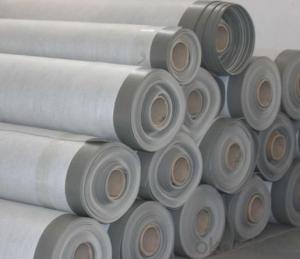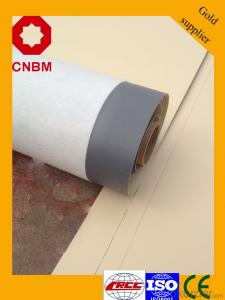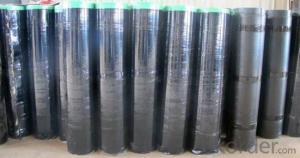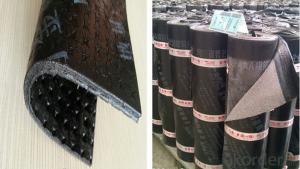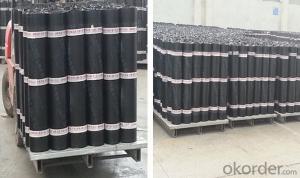SBS Elastomeric Polymer Bitumen Waterproof Roofing Membrane Tpae
- Loading Port:
- Tianjin
- Payment Terms:
- TT OR LC
- Min Order Qty:
- 5000 m²
- Supply Capability:
- 100000 m²/month
OKorder Service Pledge
OKorder Financial Service
You Might Also Like
Quick DetailsType:
Waterproof Membrane, Waterproof membrane Place of Origin: China (Mainland)
Surface film: PE, SAND, SCHIST,aluminum Thickness: 2.0mm~5.0mm Length: 10.0m
Width: 1.0m Usage: waterproofing for roof, understand,etc
Packaging & DeliveryPackaging Details: 10 sq.m./roll export package or as requirment
Delivery Detail: 15 days after receipt of deposit.
Specifications3mm SBS modified bitumen waterproof membrane
1) 2--5mm
2) Base:PY/G
3) Surface:PE / S / M / Al
Application:
1. Make sure the base surface smooth, clean and dry(Moisture<9%), then paint the delicated agent on the base surface. start application till it is dry.< span="">
2. Application Method:
Heating the bottom surface of membrane and the roof deck surface by flam spray gun or other suitable appliances till the asphalt start to melt(not flowing), then spread. Using roller to compact the membrane so that it can firmly adhere to the base surface. The overlap on the long side should be 100mm and the short side should be 150mm.
3. After application, a careful inspection is required. Make sure there is no air bubble, no fold, no falling away etc to guarantee the waterproof life.
Package
the membrane is launched into the market in rolls 1m wide and 10m long.
Storage Conditions and Service life
Rolls must be vertically stored in roofed-over spaces. If the rolls have to be stored outdoors for a long period of time, then they must be covered with a protective layer in order to protect them against the sunlight. If the rolls are to be stowed without pallets, they they are not stacked one on top of another. In palletised stowage, two rows may be stacked one on top of the other.
Attentions for Construction
·
SBS / APP asphalt waterproof membrane, bituminous waterproof membrane
1. Membranes should be stored under dry and ventilated conditions.
2. Different types of membranes must be piled separately.
3. Under usual condition, storage period is one year since production date.
4. Membrane roll should be put vertically during transportation. It should be kept away
from sunshine and rainwater.
Installation Sketch point
Clean the substrate using broom or high pressure dusty cleaner.
Apply primer
Heat the membrane bottom using a high temperature flame gun.
Push forward while the primer and membrane oil melted
Use a roller to push hard the membrane surface to ensure it stick firmly
Why choose us?
1,Honest supplier to the worldwide buyers
2,Factory, direct supplier, competitive price
3,Know how to control the costing with 30 years experience
4,Warm and friendly service and guide
5,China National Standard GB/18242-2008
6,3 shifts workers for 24hrs production, high capacity
7,Small and big orders are welcome from the worldwide
8, 24 hours service for you
FAQ
1,Q:Are you a factory or trading company?
A:We are a factory
2,Q:Where is your factory located?How can i visit there?
A:Our factory is located in Zhengzhou City,Henan Province,China,about 2 hours plane from Shanghai,Guangzhou ect.We can pick you up at the airport.All our clients,from home or abroad,are warmly welcome to visit us!
3,Q:How can i get some samples?
A:We are honored to offer you Free samples.
4:Q:How does your factory do regarding quality control?
A:Quality is priority.King Waterproof Material people always attach great importance to quality controlling from the every beginning to the very end.Our factory has gain ISO9001:2008,ISO4001:2000 ,CEC And LANxess Testing
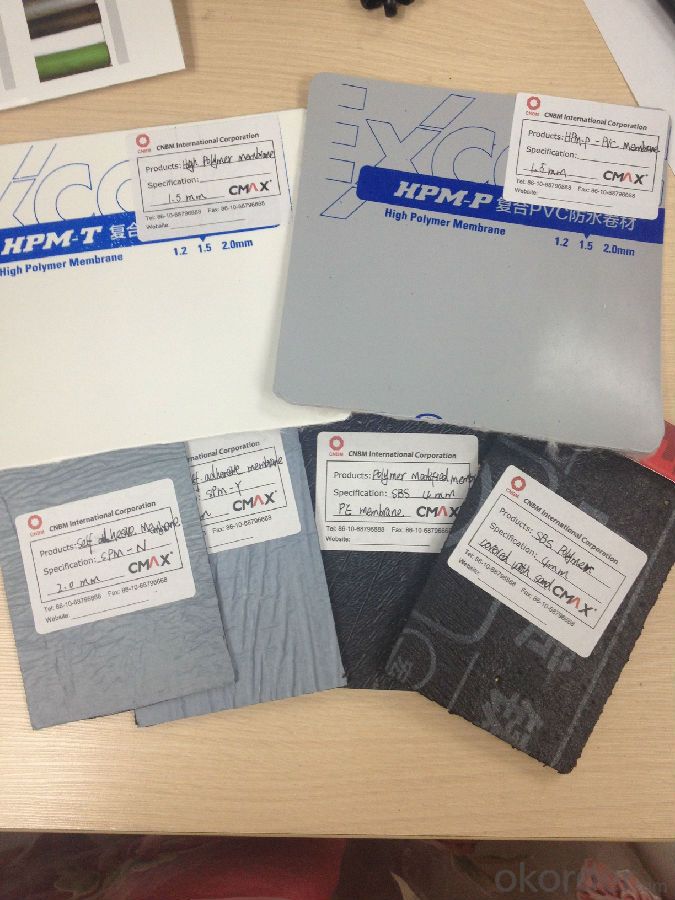
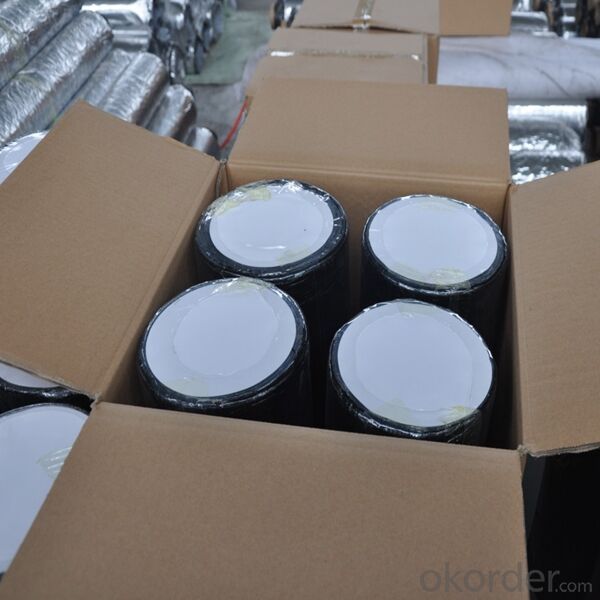
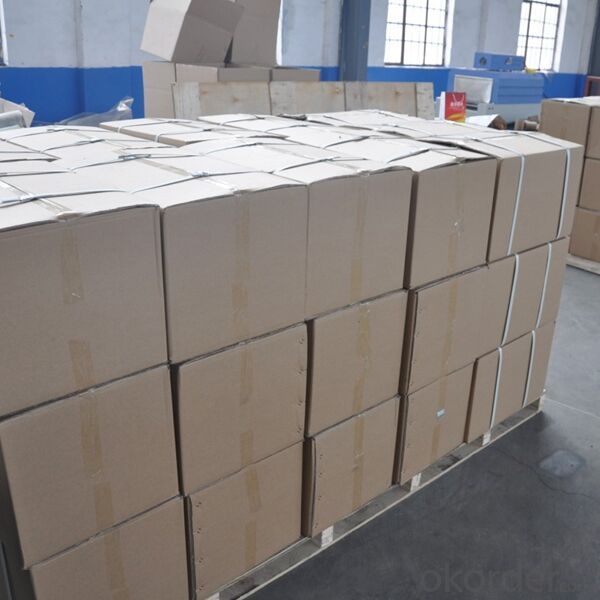
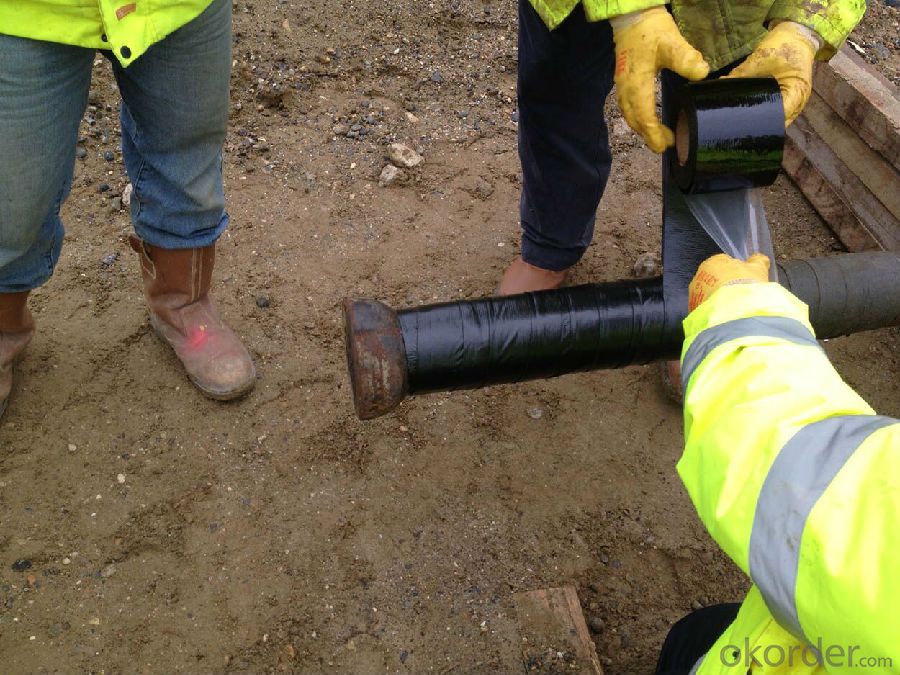
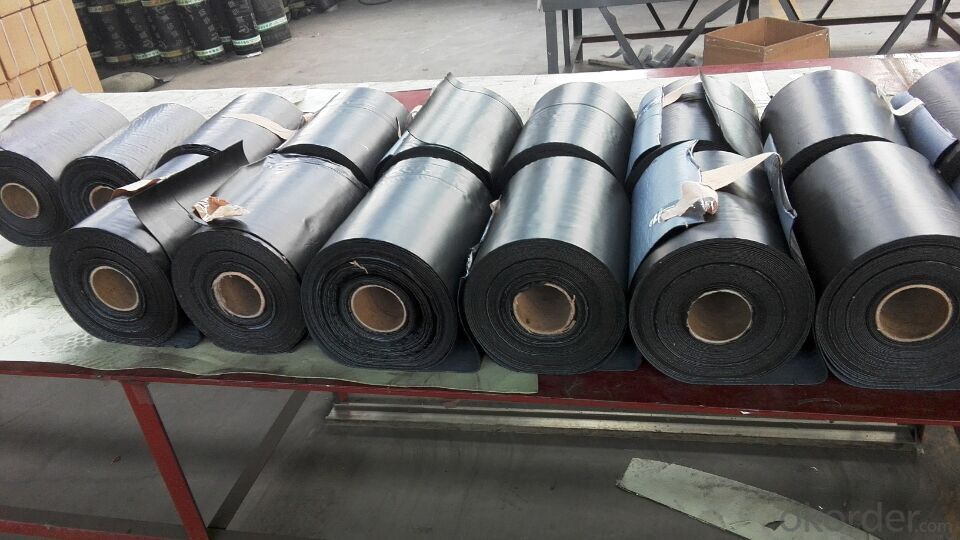
- Q: Can a waterproofing membrane be used for theaters or concert halls?
- Yes, a waterproofing membrane can be used for theaters or concert halls. Waterproofing membranes are commonly used in construction projects to prevent water infiltration and protect the building from water damage. The membrane is applied to surfaces such as walls, floors, and roofs, creating a barrier that prevents water from seeping through. In theaters and concert halls, where the protection of the building structure and equipment is crucial, waterproofing membranes can be highly beneficial. They can help prevent water damage to sensitive equipment, such as audiovisual systems, lighting fixtures, and musical instruments. Additionally, a waterproofing membrane can help maintain a dry and comfortable environment for both performers and audience members by preventing water leakage and moisture buildup. Overall, using a waterproofing membrane in theaters or concert halls can help ensure the longevity and functionality of the building while providing a safe and enjoyable experience for everyone involved.
- Q: Are waterproofing membranes resistant to gas and vapor transmission?
- Yes, waterproofing membranes are generally resistant to gas and vapor transmission. These membranes are designed to provide a barrier against water penetration, but they also offer resistance to the transmission of gases and vapors. This resistance is crucial in preventing the movement of moisture and potentially harmful gases or vapors through the membrane and into the structure. Waterproofing membranes are typically made from materials that have low permeability to gases and vapors, such as synthetic rubber, thermoplastic, or bitumen. Additionally, they are often reinforced with additives or layers to enhance their resistance to gas and vapor transmission. Overall, by using waterproofing membranes, one can create a durable and effective barrier against water, gases, and vapors in various construction applications.
- Q: Can a waterproofing membrane be used for roofing?
- Yes, a waterproofing membrane can be used for roofing. In fact, it is a common choice for many roofing applications. Waterproofing membranes are designed to provide a protective barrier against water infiltration, which is essential for preventing leaks and water damage on roofs. These membranes are typically made of durable materials such as asphalt, synthetic rubber, or thermoplastic, which are resistant to water and can withstand harsh weather conditions. They are installed over the roof surface and provide a seamless, watertight layer that helps to keep the interior of the building dry and protected. Additionally, waterproofing membranes can be used on various types of roofs, including flat roofs, sloped roofs, and even green roofs. Overall, using a waterproofing membrane for roofing is an effective way to ensure long-lasting durability and protection against water damage.
- Q: Can a waterproofing membrane be used for wastewater treatment plants or sewage facilities?
- Yes, a waterproofing membrane can be used for wastewater treatment plants or sewage facilities. These facilities often require protection against water infiltration and leakage due to the presence of large amounts of water and potentially corrosive substances. A waterproofing membrane is a versatile solution that can provide a barrier against water penetration, helping to prevent damage to the structure and ensure the proper functioning of the facility. It can be applied to various areas such as walls, floors, roofs, and tanks, helping to maintain a watertight environment and prolong the lifespan of the facility. Additionally, some waterproofing membranes are specifically designed to withstand harsh chemicals, making them suitable for wastewater treatment plants and sewage facilities where corrosive substances may be present.
- Q: Can a waterproofing membrane be used for swimming pool decks?
- Swimming pool decks can benefit from the use of a waterproofing membrane. This special barrier acts as a shield, preventing water from penetrating the underlying structure. Its primary purpose is to ensure the durability and longevity of the deck, especially in areas where water exposure is frequent. To achieve a seamless and watertight seal, the membrane is typically applied over the concrete surface of the pool deck. By doing so, it effectively safeguards against water damage, such as cracking, spalling, or deterioration of the concrete. Moreover, it significantly reduces the risk of leaks or water seepage into the surrounding areas. In addition to its protective qualities, a waterproofing membrane can offer other advantages, including slip resistance, UV resistance, and protection against chemicals and stains. When choosing a waterproofing membrane for your swimming pool deck, it is crucial to select one that is specifically designed for this purpose. This ensures that it can withstand frequent exposure to water and other environmental factors.
- Q: Can a waterproofing membrane be used on tunnels?
- Tunnels, being exposed to high moisture levels, groundwater infiltration, and potential leaks, necessitate the use of a waterproofing membrane. This is crucial for safeguarding their long-term structural integrity and preventing water damage. In tunnel construction, waterproofing membranes are widely employed as they effectively prevent water penetration and act as a reliable moisture barrier. These membranes are specifically designed to be durable, flexible, and resistant to different environmental conditions, making them suitable for tunnel application. By applying these membranes to the tunnel walls, roof, and floor, a waterproof seal is created, ensuring the tunnel remains dry and protected against issues such as corrosion, deterioration, and mold growth caused by water. Moreover, the use of waterproofing membranes not only helps reduce maintenance costs but also extends the lifespan of the tunnel infrastructure.
- Q: Can a waterproofing membrane be used for below-grade parking structures?
- Below-grade parking structures may utilize a waterproofing membrane to prevent water infiltration and safeguard against water-related damage. This type of membrane is frequently employed in construction to create a barrier against water and its detrimental effects. Considering the nature of below-grade parking structures, which are either fully or partially underground, the surrounding soil and groundwater pose an increased risk of water seepage. To counteract this, waterproofing membranes are applied to the exterior surfaces of the structure. These membranes, typically composed of materials like bitumen, rubberized asphalt, PVC, or polyurethane, exhibit exceptional resistance to water penetration. Moreover, certain membranes may possess additional attributes such as crack-bridging capabilities or protection against chemicals or gases. For the optimal selection of a suitable membrane for a specific below-grade parking structure, it is vital to consult with an experienced engineer or waterproofing specialist. Factors such as soil conditions, hydrostatic pressure, and adherence to local building codes must be carefully considered in this decision-making process.
- Q: Is a waterproofing membrane resistant to saltwater or salt damage?
- Typically, a waterproofing membrane resists saltwater or salt damage. Its purpose is to create a barrier against water and moisture, making it suitable for use in marine environments or coastal areas. These membranes are made from materials that can withstand the corrosive effects of saltwater or salt. To ensure their resistance to saltwater or salt damage, proper preparation and sealing techniques are employed during installation. However, it is important to note that the level of resistance may vary depending on the type and quality of the membrane. Therefore, it is advisable to consult with a professional or the manufacturer to choose the appropriate membrane for the specific application and environment.
- Q: Can a waterproofing membrane be used in conjunction with drainage systems?
- Yes, a waterproofing membrane can be used in conjunction with drainage systems. The membrane provides a barrier to prevent water penetration, while the drainage system helps to channel and remove any water that may accumulate. This combination ensures effective and comprehensive waterproofing for various applications such as basements, roofs, and underground structures.
- Q: Can a waterproofing membrane be used for basements and crawl spaces?
- Yes, a waterproofing membrane can be used for basements and crawl spaces. Waterproofing membranes are designed to provide a barrier against water intrusion, preventing moisture from seeping into these areas and causing potential damage. They can effectively protect basements and crawl spaces from water leaks, dampness, and moisture-related issues.
Send your message to us
SBS Elastomeric Polymer Bitumen Waterproof Roofing Membrane Tpae
- Loading Port:
- Tianjin
- Payment Terms:
- TT OR LC
- Min Order Qty:
- 5000 m²
- Supply Capability:
- 100000 m²/month
OKorder Service Pledge
OKorder Financial Service
Similar products
Hot products
Hot Searches
Related keywords
